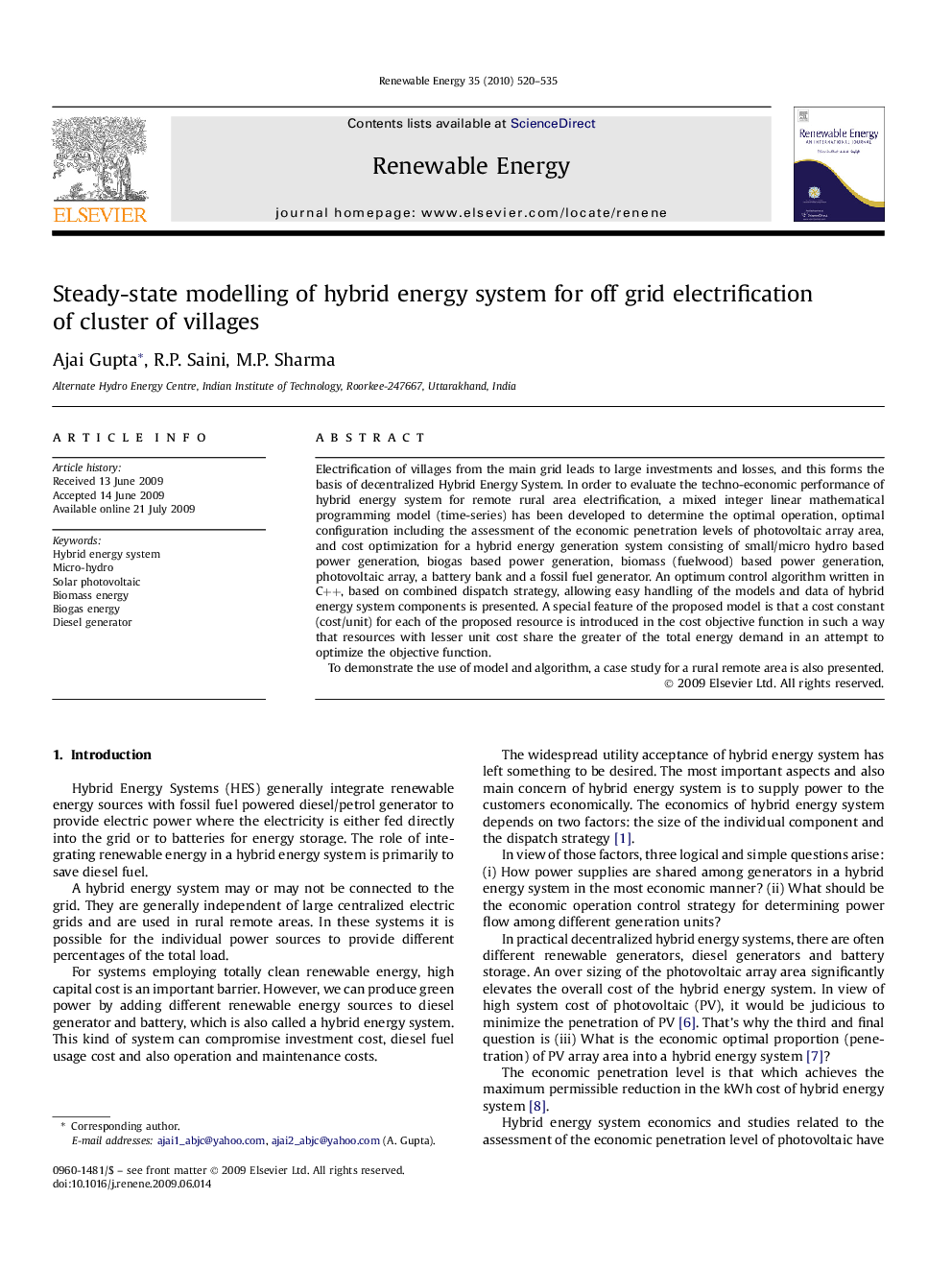| Article ID | Journal | Published Year | Pages | File Type |
|---|---|---|---|---|
| 301901 | Renewable Energy | 2010 | 16 Pages |
Electrification of villages from the main grid leads to large investments and losses, and this forms the basis of decentralized Hybrid Energy System. In order to evaluate the techno-economic performance of hybrid energy system for remote rural area electrification, a mixed integer linear mathematical programming model (time-series) has been developed to determine the optimal operation, optimal configuration including the assessment of the economic penetration levels of photovoltaic array area, and cost optimization for a hybrid energy generation system consisting of small/micro hydro based power generation, biogas based power generation, biomass (fuelwood) based power generation, photovoltaic array, a battery bank and a fossil fuel generator. An optimum control algorithm written in C++, based on combined dispatch strategy, allowing easy handling of the models and data of hybrid energy system components is presented. A special feature of the proposed model is that a cost constant (cost/unit) for each of the proposed resource is introduced in the cost objective function in such a way that resources with lesser unit cost share the greater of the total energy demand in an attempt to optimize the objective function.To demonstrate the use of model and algorithm, a case study for a rural remote area is also presented.
